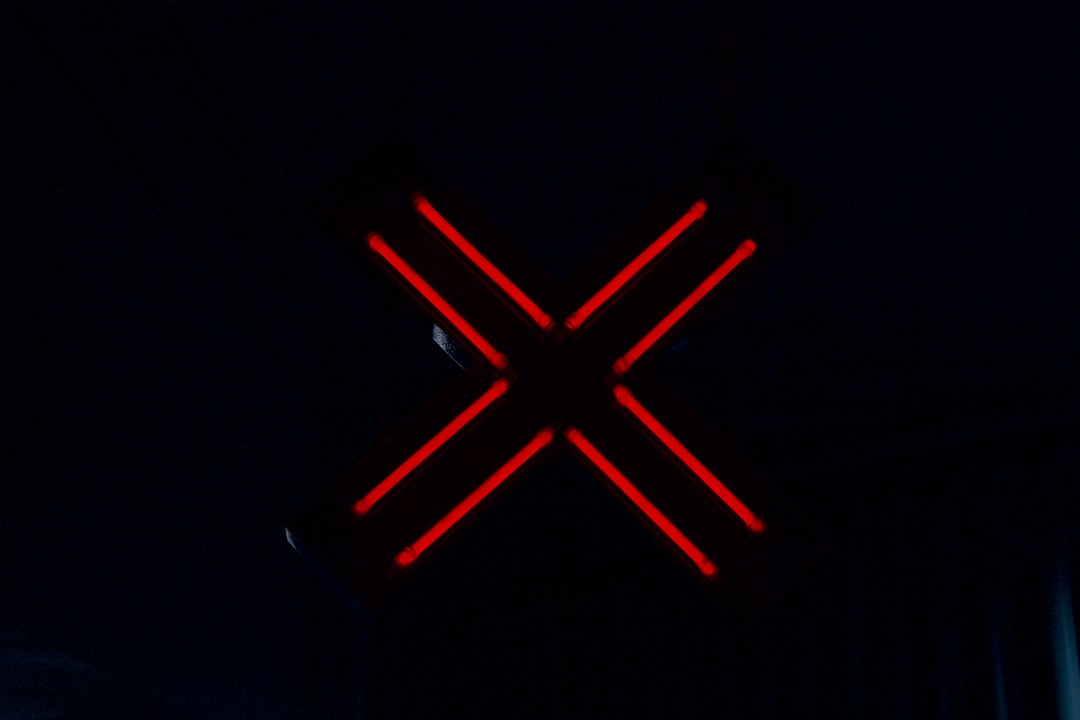Do We Really Want Email Novels?
The Sad Truth About Serial Fiction Platforms Part 1 — Substack
*This post may interest both readers and writers of fiction. I will mostly focus on Substack with a dash of Vella and Radish.
Let’s begin with a poll:
For the past two months, I’ve been investigating serial fiction publishing options hoping to find an acceptable place to release serially my new holiday dystopian novel, Acid Christmas. The plot of the novel involves a countdown to Christmas, like an advent calendar, and I thought it would be fun to “count down with readers” by releasing the book in small chunks leading up to Christmas day.
The only issue: I don’t want to give the book away for free.
Yes, I work hard on my novels, and they are worth paying for.
I also didn’t want to self-publish Acid Christmas in print, because I was racing to finish writing and editing the book and the timing with print production is precarious, I learned that from my first two novels, and possibly it wouldn’t be ready before Christmas. Releasing it in paperback or audiobook to get delivered by December 25th was a gamble.
With serial fiction, I could start releasing chapters instantly and have more control over the timing.
This is what I wanted to do:
Release two chapters per day from mid November to Dec 23rd, ideally with an audio option embedded or available with the text.
Charge a low, two-month subscription price of $2-3 dollars a month, to make the full book equal a typical ebook novel price.
Offer the first few chapters free to all as a sample hook.
Allow anyone to buy the completed book later, with plans to relaunch next year in a traditional fashion around the holidays and have it available in paperback, audio, etc.
This trickled release would allow true fans to get the book in advance and go on a fun, psychedelic holiday journey with me!

The Current Platforms of Serial Fiction
Serial fiction, AKA novels released in episodes like a TV show, is a hot topic in the publishing industry, and for good reason—in Asia, millions of people read serially and on cell phones. China alone reportedly has 330 MILLION readers of serial fiction.
For fan fiction, Archive of Our Own and Fanfiction.net are also hugely popular sites offering free serial fiction based on popular media. These sites are technically illegal, yet they persist.
Globally, Wattpad and Webtoons (owned by the same Korean company) rule the legal English-language serial fiction market. Wattpad alone boasts 90 MILLION users. However, Webtoons is for graphic fiction/comics, and Wattpad is basically free, and not a place where most indie authors can sell their work. Some Wattpad novels get picked up by Wattpad’s publishing and media arm or get offers from traditional publishers, but it’s rare. So, these options wouldn’t work for my novel, Acid Christmas.
Since neither Wattpad nor Webtoons would serve my needs, I looked to the other often-mentioned platforms for serial authors. Currently, for indie authors who want to sell and release serial fiction, there are three, maybe four, primary options:
Substack
Amazon’s Kindle Vella (which won’t even work on a Kindle… 🤦♀️)
Radish
Patreon (the platform I put in the maybe category, because the company doesn’t push this as the platform’s primary use, but people are doing it.)
A Reading Experiment
I decided to do an experiment and read novels on all three serial fiction publishing platforms to see which platform I liked best from a reader’s perspective. Aside from being able to sell my serial book, I wanted to ensure readers get a fun, fluid, frictionless user experience as they read my novel leading up to Christmas.
After attending a live webinar hosted by the Author’s Guild and featuring the management of Amazon’s Kindle Vella and Substack, I was even more excited about the prospects of a serial release. I took notes from the webinar if you want to read them.
However, after testing all three currently available options for paid release of serial fiction, I’m left forlorn.
None of the options are good for readers.
Four main problems exist on all three platforms:
Chapter Navigation
Discoverability/Search
The Downward Scroll
Beyond these three problems, each platform had its own specific friction points and issues.
Something must be different about serial fiction in China/Korea/Japan, and I’d love to learn more about the non-English platforms in these countries.
Let’s begin with Substack’s problems for serialized fiction.
Substack’s Problems

Now, I LOVE Substack; this is not to trash the platform. Substack is GREAT for blogs and independent reporting, for poems, and even for sharing music playlists (shout out to Flow State.) Substack is AMAZING for one-off posts and unordered series. For example, a short story collection would work on Substack, provided you weren’t hung up on the order of the stories.
BUT have you tried to read a novel on Substack?
I tried to read four different Substack novels: Elle Griffin’s Obscurity, Chuck Palahniuk’s Greener Pastures, Salman Rushdie’s The Seventh Wave, and G.M. Baker’s The Wistful and the Good. Several articles touted these as examples of “best novels” on the platform.
I couldn’t navigate through any of them without issues.
First off, Palahniuk and Rushdie got paid advanced deals of unknown sums of money by Substack to write their books on Substack in order to promote and boost the Substack platform. It’s doubtful that either author would have used Substack without getting these deals. Palahniuk took the deal after almost going bankrupt due to embezzlement at his literary agency. Yikes.
But how are their deals working out for their readers and fans?
As I mentioned, the main challenges for reading novels on Substack are problems with chapter navigation, downward scroll, and discoverability/search.
Navigation
Where the f#ck is chapter one?
It was difficult and time-consuming to find the beginning of all four novels I tested. None would navigate effectively in the Substack App on my iPhone. They all worked better in my desktop web browser but still weren’t great.
Obscurity by Elle Griffin on her Substack The Novelleist was the best-organized example of a serially released novel on Substack that I tested. She used the platform like a Kickstarter campaign and promised paid subscribers a physical copy of her book when the serial ended. Yet, when I tried to read her first Substack novel Obscurity, now complete, I couldn’t find it in the Substack mobile app. Where was chapter one? How do I search?
Instead, I got thrown into her current stream of posts on different topics and a few chapters from a new novel. She’s releasing the new book’s chapters infrequently, (imo) so by the time the next one comes out, I’ve forgotten what happened in the last chapter. I guess the infrequent release is a good way for authors to keep fans subscribed and paying because the book takes more months to conclude, but I’m not in favor of the slow trickle as a reader.
Further investigation yielded an ebook version of her completed Substack novel on Amazon with only one review… Unless I’m missing something, it appears that to read a print copy of her Substack novel, you need to pay her premier tier “Collector” price of $200 annually and subscribe for an entire year; then she will mail you a hard copy of the book (which looks stunning and ornate.)
Below the “Collector’s Tier” of $200, she has a $50 tier (un-glamorously called “paid subscriber”) and a free option.
For free you can read the archived and new chapters, but not the author’s notes or comments. Nor can you comment on or read general posts behind the paywall. Her tier system is pretty elaborate compared to others, which I think engenders reader commitment.
With the 2nd tier, you can either pay $10 per month ($120 per year) or pay $50 upfront for the year. At this tier, you can read the archive of the serial novel on Substack, comment, get the author’s notes, join a private discussion thread, get writing prompts, and read the paid posts.
I paid for the $50 level as part of my experiment and was finally able to locate the serialized novel on my desktop computer, but it required several clicks and scrolling through forty chapters to get to the beginning.
At least Griffin puts links at the bottom of her chapters to navigate to the next chapter, not present in the other novels I looked at on Substack. Still, the system is hardly ideal and only possible in a web browser, not on the mobile app without a lot of frustration.
I love her Substack and I’m glad I paid to become a member. It’s worth subscribing to for her general posts about envisioning a better world, and I like the members-only chat, but for the novel reading experience, it’s working zero percent well for me.
The Wistful and the Good by G.M. Baker, free to read, also required scrolling through 39 other chapters, and then once I read chapter one, it didn’t automatically go to chapter two, and I had to scroll through all over again! Way too much friction for the average reader.
Greener Pastures, by Chuck Palahniuk, $6 per month, required even MORE scrolling—through 52 chapters. Plus, there was no navigation link to the next chapter.
The Seventh Wave, by Salman Rushdie, $6 per month, had all the same issues as Greener Pastures, but also didn’t even have the first episode/chapter labeled as #1 in the title! I was just guessing as I clicked on the titles.
Discoverability/Search

A “sort” button at the top of the novel’s tab that allowed readers to arrange the chapters in the correct order would solve the initial navigation problem, but Substack hasn’t made this feature, and unless the author manually adds a link or a next button to the chapter, there is no way to easily continue reading the book in the correct order.
Likewise, when I used the search bar provided by Subsack on the novel’s index page to search for “Chapter One” or “Episode One,” no results came up… So the search function doesn’t work. It’s broken or messed up. I even tried variations like “one” or 1. Nothing.
The fact that I wasn’t able to find the beginning of these novels on the mobile app is something Substack needs to fix.
Plus, what if I want to see similar books, or have my book discovered by readers of books in similar genres? Substack doesn’t have a function for this, nor does it give you categories for your novel to be filed under besides “Literature,” or “Fiction,” on their “Discover” page. This is very vague compared to the other platforms of serial fiction.
It would be better to have more detailed genre and search fields, which Vella and Radish both have, though Vella’s works poorly and Radish is limited to mostly porn in the form of words, but they have super-rich subcategories within Radish, which was the most user friendly of all the platforms I tested. You can see very specific romance genres like “Multiracial Age Gap,” “Co-Worker Romance,” or “Reverse Haram Paranormal Romance.” I don’t expect this level of detail for Substack, but broad categories like Sci-Fi or Romance would be a welcome addition.
Substack novels also suffer from the Downward Scroll Problem.
The Downward Scroll

Maybe I’m just an old fuddy-duddy, but I don’t enjoy scrolling fiction.
Readers are used to reading books by pages, with paragraph indents like in print and on popular ebooks platforms. Pages, chapters, and paragraph indents tell our brains, “Hey, I’m reading a book, slow down.” We flip pages and have indents even in ebooks on Kindle, Kobo, Nook, etc., so it feels like A BOOK.”
These visual, physical, and mental triggers don’t happen in serial fiction online because there are no pages and there are no paragraph indents. It’s a downward scroll, just like web articles. And what does our brain do while reading web articles? It SKIMS.
Face it. You’re probably skimming right now!
The urge to skim or read faster than I would an ebook while testing the novels on Substack, Vella, and Radish, was strong, and I didn’t love it. I don’t want to read novels on my desktop or laptop. If I can’t read an ebook on my phone or tablet, I’m probably not reading it.
Fiction needs paragraph indents and page turns! Call me a GenXer, but that’s how I feel.
I really hoped Amazon Vella would make the experience like Kindle reading, and have pages and paragraphs, but they didn’t. Vella doesn’t even work on a Kindle. It’s also all returns and scrolling, as is Radish.
Substack’s Gold Stars

Pricing
Unlike Vella or Radish, Substack pricing for readers and payments to authors is transparent and simple. You sell your monthly subscription for a price of your choice and you can do different tiers for different perks, like Kickstarter or Patreon, then Substack takes 10% of your earnings. It’s easy (almost too easy) for subscribers to sign up and pay like they were subscribing to anything else.
Rich Media
Substack allows you to embed art, music, photos, audio clips, and videos easily into your books (as does Wattpad) which I LOVED for the prospect of my novel because I have art and playlists to go with it. This is a definite advantage to Vella and Radish. You can also create a sort of cover or cover banner, though it doesn’t feel like a book cover. Your book cover included at the top of every episode could be a way around this.
Customization
Unlike Radish and Vella, which put all books into the same formatting/mold, Substack offers authors a lot of creative leeway and freedom. You can visually brand and organize your book however you want. Add your own voice, or let the computer narrate it in the Substack app. You can add as many media elements as you want, and you can set transparent price tags and payment levels. You can make some things free and some paid. It’s a very flexible system.
Comments and Reader Engagement
Another strength of Substack is for readers and the author to comment on and chat about the chapters at the bottom of each post. This makes reading fun and interactive. The Substack chat feature is not as amazing as Wattpad, because it doesn’t allow you to highlight and comment on lines in the text, but it's a step closer to that experience. Radish also allows this, but Vella is very limited with their comment/chat functions.
Audience
Substack shines in potential audience reach. People can pay and read your serial novel on Substack from 47 different countries. Amazon’s Vella currently only works in the U.S. It doesn’t even work yet for Canadian readers.
Notably, Mexico, India, Brazil, Indonesia, and Malaysia cannot read on Substack, but they are working on fixing this.
I could not figure out which countries Radish serves despite digging and digging. Of all the platforms, Radish offers the least amount of information and transparency on earnings and audience. I even messaged them questions using their helpline chat and got nada. I suspect their audience is the smallest of all the platforms.
The Network Effect
Substack has a network effect feature where Substack authors can encourage readers to subscribe to other Substacks. The platform itself promotes the growth of its author’s readership. This is missing from Vella and Radish who only push the top-performing novels on their discover page in the form of “Top Lists.” There is no way on those platforms for other writers to recommend your Substack within the platform.
The Substack Email Novel? Maybe but…

Unlike Vella or Radish, Substack allows you to send each bit of the novel automatically as an email. As a reader, if you wanted to read the book in your email and you followed along in real-time, the Substack system might work for you.
But how many people want to read a novel in their email? Will readers faithfully read each time you send chapters and not miss things or get behind or confused? Do we want emails at the frequency required to maintain the flow of a novel? Do we want a book broken into 52 emails? Inevitably, readers will have to search through their own emails to find chapters.
Another issue is that the Substack emails often land in the “promotion” or “update” tab if the person uses Gmail.
For me, it’s too much work to read a novel broken into emails and I don’t love reading emails to begin with. Even for the Substacks I enjoy, which are many, I read them in the app or online, not in my email.
Not to mention that recipients can then forward your chapters to anyone, and that person can read them without paying or copy and paste them wherever.
Also, in the email, you can bump up against the word count maximum. The system will only let you receive/send so many words or pictures in one email. So the person has to leave their email and go to the browser, possibly log in again, forget their password, blah blah blah to finish the chapter. Not good.
Conclusions
All I want for Christmas is a serial fiction platform that really works. Publishing serial fiction on Substack may be great one day, but today is not that day.
Substack promises to keep the new features rolling, so hopefully, the situation will improve soon for fiction writers.
The Future of Acid Christmas
What will I do with my dystopian holiday novel, Acid Christmas? I’m still wondering, and the clock is really ticking. I may have to wait and release it in the normal fashion next year, though that PAINS ME, but I can’t risk taking pre-orders or saying it will be ready in print by Christmas and then it’s not… I also don’t want to make my readers pay for the unsatisfactory experience of reading the novel in pieces in their email, or on a platform that doesn’t offer a fluid, easy-to-navigate reading experience.
The other option would be to release the book on Substack for free, and treat it like an advanced, interactive collective beta read, then make the book disappear after Christmas and publish it in print next year.
Let me know your thoughts.
Would you read a novel in your email? How do you feel about scrolling vs turning pages? Returns vs indents?
How much would you pay monthly to read one author’s novel?
If I’ve made any errors in this post, please let me know in the comments.








Charlotte, I have a lot to say. This is the kind of conversation I like to have over a cortado in a noisy coffee shop.
I’m going to publish serially here on Substack next year. In terms of timing, I will only publish once the book has been edited and beta read, just like my normal publishing process. After the serial release (chapter a week?) is complete, I will publish on Amazon (ebook and paperback) and give my paid subscribers their signed paperback. My serial releases will be free. I’m not worried about folks forwarding or copying and pasting. I agree with Hugh Howey on this one: getting wide readership is more important than copyright and profit. Once your books are popular, the money will come.
There’s too much to unpack regarding your excellent and thorough article, but I will say that the more we (long form fiction writers) publish here the better the interface will become. Particularly if we demand improvements. Substack wants to make money. So they will continue to innovate if it increases revenue. And that helps us writers too.
I agree, Substack has a way to go regarding serial fiction. It was obviously designed for non-fiction. Regardless, I wrote my second novella one chapter at a time on Substack.
I put it in its own Section so it had a built in index. And I pinned chapter 1 to the top of the section index. I also included links to the next chapter at the end of each chapter.
Unfortunately, Sections are only visible in a browser. App users don’t see them.
One thing I loved about my writing a novel live experiment was I got helpful comments that offered suggestions and caught typos. It was like a group beta read.
But Substack does need to add serial features before it becomes an ideal place for serial fiction. Especially to the app. As reading on an iPad is more like reading a book. If that is what people still want. Future readers may not care as less people read physical books.